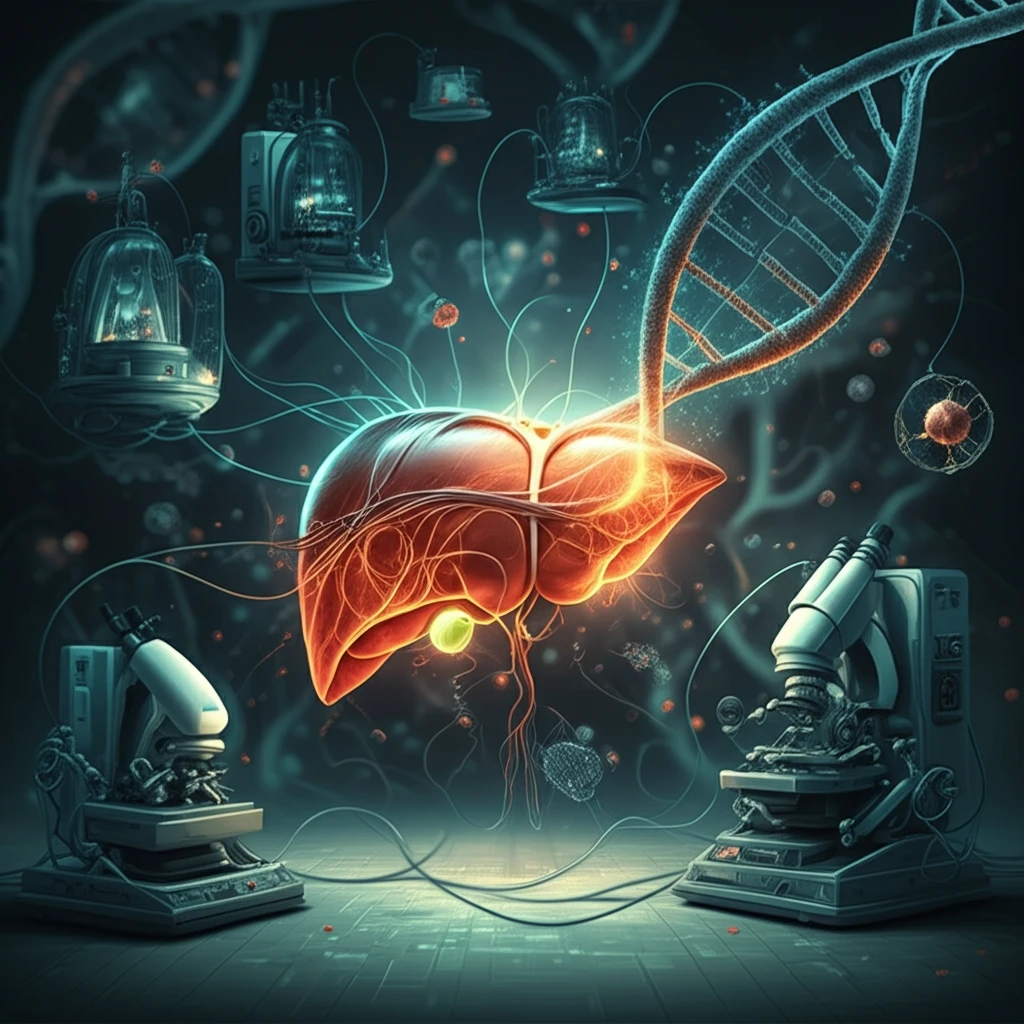
Stem Cell Breakthrough: How New Research Could Revolutionize Liver Disease Treatment
"Scientists are refining stem cell techniques to create functional liver cells, potentially offering new hope for patients with liver disorders. This is how it works."
Liver disease affects millions worldwide, often leading to chronic illness and the need for transplants. Traditional treatments have limitations, underscoring the urgent need for innovative solutions. Stem cell research is emerging as a promising avenue, offering the potential to regenerate damaged liver tissue and restore function.
The ability to differentiate stem cells into specific cell types, like liver cells (hepatocytes), has opened new doors in regenerative medicine. Induced pluripotent stem cells (iPS cells), which are adult cells reprogrammed to an embryonic-like state, can be directed to become hepatocytes. However, creating mature, functional hepatocytes in a lab setting remains a significant challenge.
Recent research details two refined protocols for differentiating iPS cells into hepatocyte-like cells, focusing on optimizing growth factors and culture conditions. These advancements aim to reduce costs and improve the efficiency of generating functional liver cells, bringing us closer to effective therapies for liver disease.
How Do These New Protocols Improve Liver Cell Production?

The study compares two different methods for turning induced pluripotent stem cells (iPS) into liver-like cells. Both methods aim to create cells that can perform the functions of healthy liver cells, offering a potential treatment for liver diseases. Let’s break down the key improvements and findings:
- Reducing Growth Factors: The modified protocol reduced the amount of growth factors needed by 40%. Growth factors are expensive, so this change makes the process more cost-effective.
- Optimizing Media Changes: Instead of changing the cell culture media every day, the new protocol adjusted the frequency. This helps to find the right balance for cell development.
- Analyzing Cell Function: The team used advanced techniques, like Cap Analysis Gene Expression (CAGE), to confirm that the cells were developing a typical liver profile. They also checked for key liver cell characteristics, such as albumin production and the presence of CYP3A4, an important enzyme.
The Future of Liver Disease Treatment
While this research is promising, there’s still work to be done before these lab-grown liver cells can be used to treat patients. The created cells are still somewhat immature compared to fully developed adult liver cells, and more research is needed to enhance their functionality. The described method will need future tests such as genome editing and further studies to test growth sequences.
